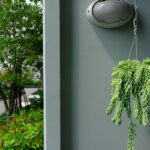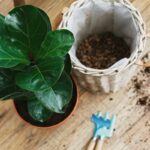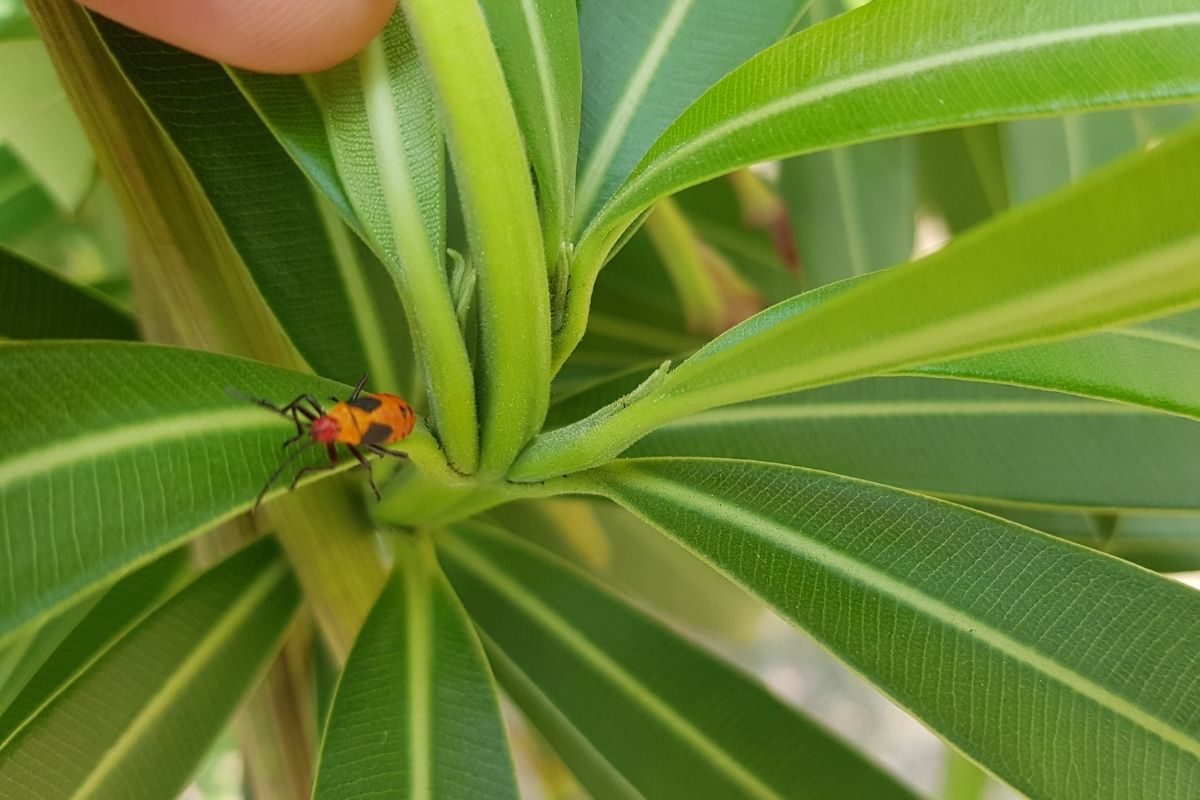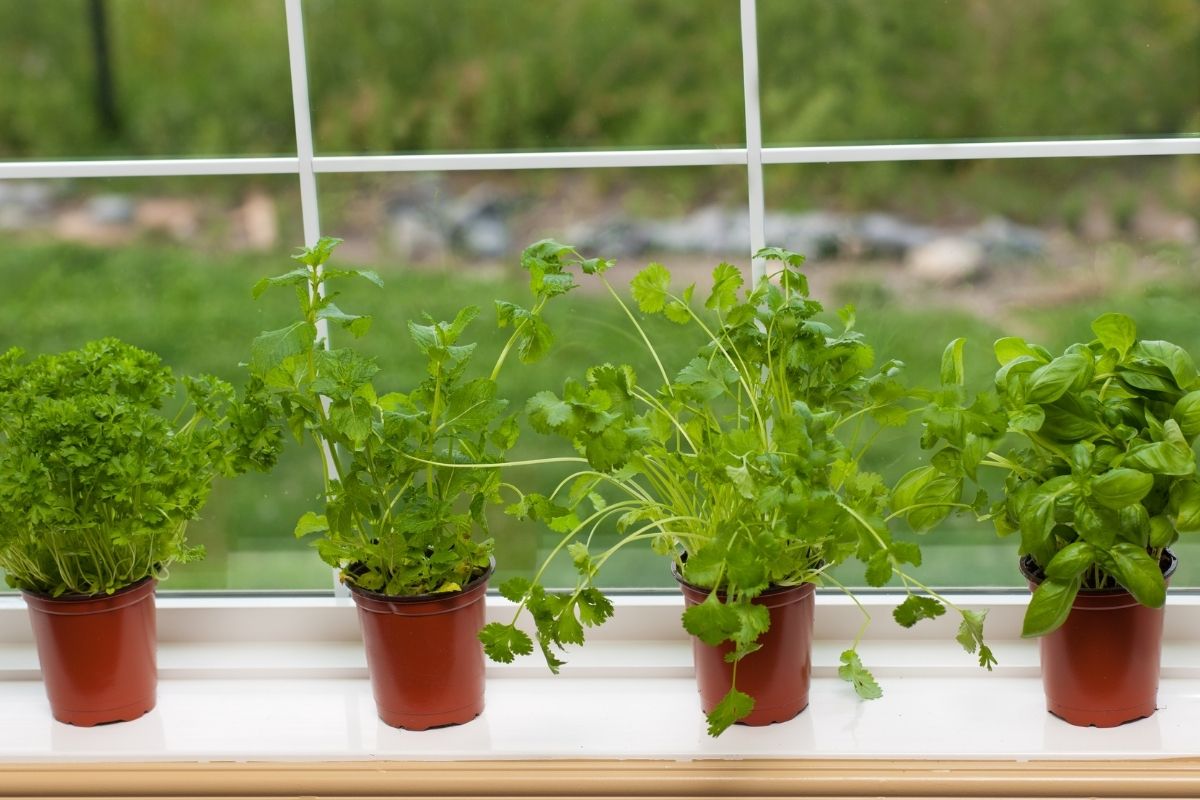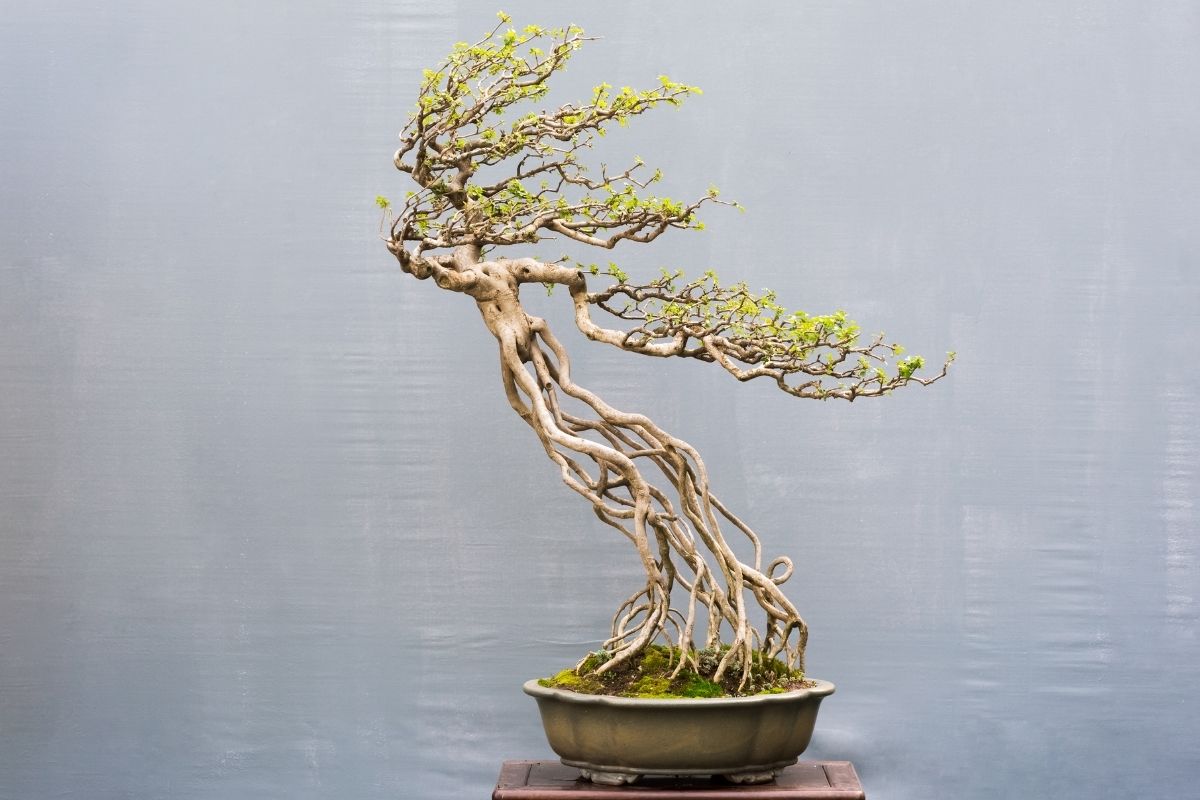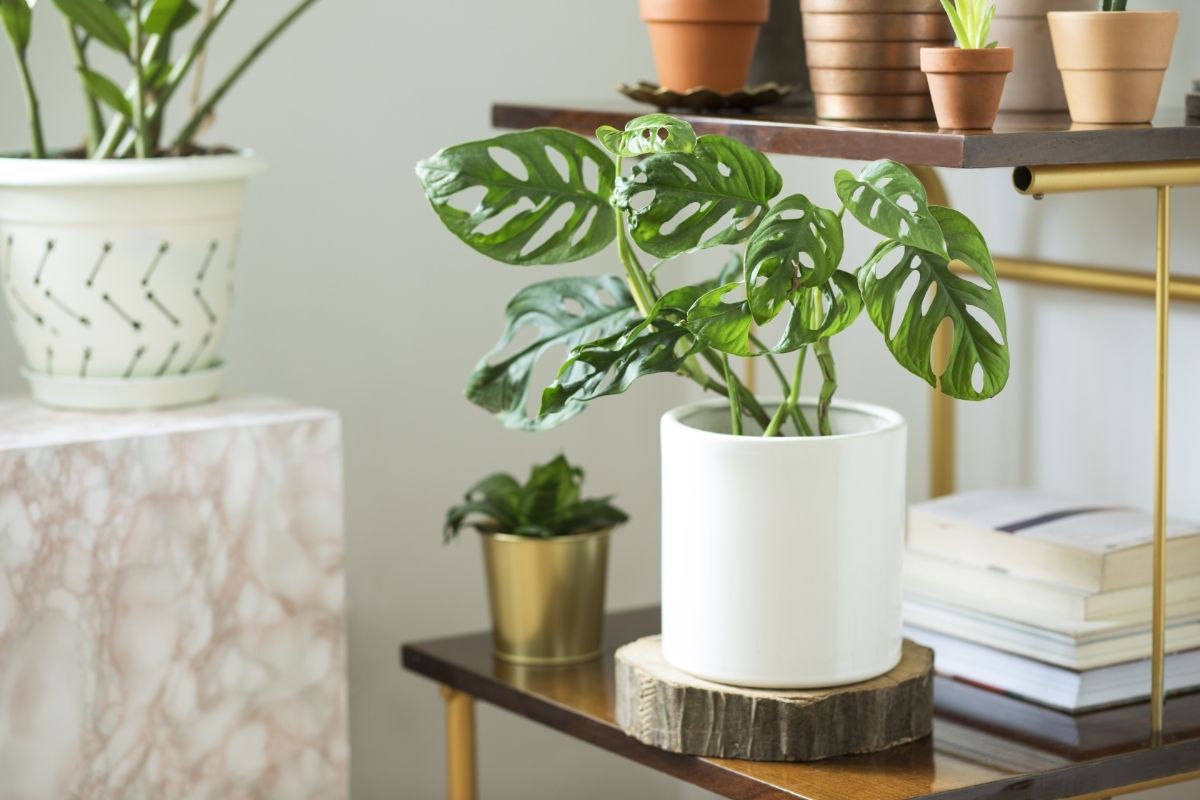Florida has gone on record as being one of the hottest states in America each and every year, with the temperatures easily reaching between 100°F and 110°F during the summer months.
The air in Florida is always at least fairly warm, which can make rooms feel quite stuffy and unpleasant to be in if you aren’t taking measures to try and counteract the heat and encourage air circulation.
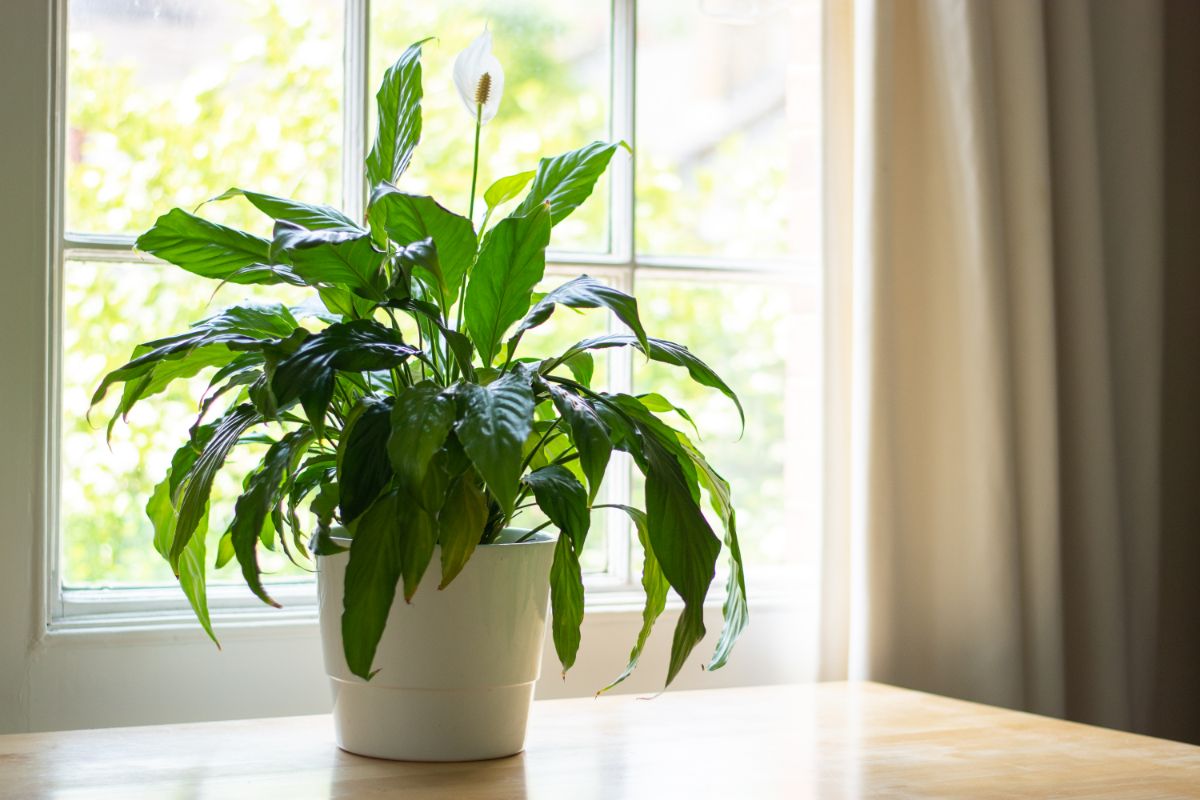
Luckily, there’s a quick and easy fix to the Floridian heat that can last you a tremendously long time if you care for it properly, and that’s welcoming an indoor house plant into the family.
This can’t just be any kind of plant though since some will struggle to stay healthy when exposed to too much heat while others are simply too difficult to manage and care for.
The good news is, we’ve narrowed down the 10 best indoor plant options for a home in Florida that you definitely should consider picking up for yourself when the heat is becoming a little unbearable and you want the perfect excuse to add some life and color to the home.
1. Boston Fern
The Boston Fern is a plant that is incredibly easy to take care of, and despite its name, it is actually a native of Florida and is a plant that enjoys being exposed to the humid conditions synonymous with the state.
While its soil can never dry out, the plant will still need to be watered and misted fairly frequently.
You should try to sprinkle some water over this colorful houseplant weekly, but when you do, make sure the soil is moist but never wet, otherwise, it can cause some complications in their roots.
During the winter, you will need to check that the top 2 inches of the soil have dried out completely from the last watering session before applying any more liquid.
This gorgeous green house plant can easily slide into either a 2-inch or 4-inch pot and will thrive when placed in humus-rich soil.
If you come to re-pot the Boston Fern, you might want to consider adding a little extra peat moss and perlite to the soil just to help improve the drainage and airflow.
This plant is capable of growing when exposed to direct sunlight, but after about a month, the leaves can become scorched and burned, so it’s advised to try and place it in a cooler part of the room with indirect sunlight.
2. Spider Ivy
The Spider Ivy, also commonly known as the Spider Plant, is well known for being not only an easy plant to grow, but also one that is incredibly durable in all kinds of ways.
They can shrug off heavy growth, heat, neglect, and physical damage very easily, a characteristic that makes them ideal for people who may not have much prior experience with indoor plants.
Spider Ivy plants actually contain air-purifying properties which can easily filter out carbon monoxide alongside other toxins which can be found in rubber, leather, and printing supplies, so they are also perfect for a house that contains plenty of furniture in the living room.
When growing a Spider Ivy, you will always want to keep it in bright to moderate indirect sunlight.
While this plant is very durable and will be able to withstand hotter temperatures a lot better than most houseplants, too much exposure can also end up burning its leaves and causing brown spots to appear.
A soil-based well-drained potting mix is also advised, and when it comes to watering, only do so once or twice a week at the most since Spider Ivy is very susceptible to water clogging, so it’s always best to let the soil dry out before applying more.
3. Peace Lily
Add a delightful dash of color to your home with this Peace Lily, a plant that contains hints of yellow, green, and white to make it a true spectacle to look at, even if it does only grow up to 3 feet tall.
Moist soil and filtered sunlight are the two essentials when it comes to caring for a Peace Lily, and in regard to the soil, your best bet will be to go with a loose potting mix that contains plenty of organic matter to facilitate the plant’s growth.
Always use filtered or distilled water rather than any that contains chlorine since this can irritate the plant and cause some unpleasant health issues in the future.
You can even fill up a bucket with some tap water and simply let it sit for a few days until the chlorine has completely evaporated.
Make sure to also spritz the leaves every week throughout the summer months with distilled water in order to raise the humidity so that the plant can grow without any obstructions.
While it’s true that the Peace Lily originates from the rainforests of Columbia and Venezuela, it has become incredibly popular in recent years across southern states including Florida and Georgia due to its lush aroma and exotic appearance.
4. Gerbera Daisy
If you really want to brighten up a living room or a bedroom and want a plant that isn’t going to demand too much of your time and effort, you need to consider picking up a small and delightful Gerbera Daisy.
This gorgeous miniature bloom has been incredibly popular in Florida for many years, with many people perching on their front-facing windows where they can be exposed to as much sunlight as possible.
Not only does this allow strangers to walk by and admire the plant in all its glory, but it is also the most optimal position for the Gerbera Daisy because it actually thrives when exposed to full direct sunlight.
Make sure to trim down the plant once the bloom starts to wilt after the spring to help new blossoms grow, and always water these plants in the morning so that the soil can then dry naturally as the day goes on.
Gerbera Daisies can last up to 3 years when cared for properly, so if you’re looking for a new addition to your house that you can guarantee will last you in the long term and still look just as beautiful as the years pass it by, this is definitely a plant you should consider.
5. Jade Plant
Jade Plants may not be the flashiest or most striking plant you can buy for the house, but since they are so easy to care for, they’re great for when you have other plants that you’re currently caring for and just want one other that can add an extra dash of color to a room.
A Jade Plant is incredibly versatile, being able to thrive in many different conditions, but the main thing every owner always needs to keep in mind is how much they are watering the plant.
Overwatering a Jade Plant will cause the leaves to fall off one by one, so to be on the safe side, only water them every 2 to 3 weeks.
This may seem like a long gap between each session, but since Jade Plants are succulents and hold their water in their leaves, they won’t do well when consistently sitting in moist soil.
You can easily tell if the plant is starting to become thirsty by checking if the leaves have become shriveled and wrinkled.
On the other hand, if the leaves are thick and squishy, it’s an indication that they have been overwatered, so it’s all about trying to reach that perfect mid-point in their texture.
Jade Plants are very inexpensive compared to most other popular houseplants and actually come in a variety of sizes, with some even having certain adjustments to their color too, so feel free to browse and decide on a plant that suits the aesthetic of the room the best.
6. Christmas Cactus
The Christmas Cactus has one of the most beautiful blooms you will ever see which usually begins around the Christmas period, hence the name, but it can also occur a little earlier at Thanksgiving.
This wonderful plant has actually been presented as a gift for several decades by this point, being seen as a symbol of love and respect towards friends and family.
In contrast to many other indoor plants, the Christmas Cactus actually prefers to be overwatered as opposed to underwatered and should be misted a few times a week to help keep them refreshed and hydrated, even when the plant is in the middle of blooming.
Try not to go too overboard with the watering though and only apply it when you can feel that the potting soil has dried up.
Give it a quick mist, and then wait a few hours, or until the day after, to check on the soil again.
This plant prefers to remain at a cool 60 to 65 degrees and therefore should be kept out of direct sunlight and placed in the shadier part of a room where it can blow visitors away with its outstanding beauty.
Bring the aesthetic of the Floridian prickly pear cactus to the home with this Christmas Cactus plant today!
7. Orchid
The biggest reason the Orchid has managed to remain one of the most popular indoor plants in Florida, and the rest of America, for so long is because of its incredibly unique jaw-dropping appearance.
When in bloom, an Orchid plant can acquire broad and flat petals, elongated thin petals, ruffled petals, and even wide-spreading petals, all of which give it a very minimalistic but dazzling aesthetic that can immediately breathe new life into any room it’s placed in.
You need to be very careful when watering an Orchid since they are very susceptible to root rot, so it’s crucially important as an owner to know the correct way to go about it.
Start by dunking the whole pot in water and let it rest in there for 5 to 10 minutes so that the roots can acquire all the nutrients they need.
Then proceed by lifting the plant out of the water, let it dry off, and repeat this process every 2 to 3 days. During the winter, the Orchid will need even less water, so aim to rehydrate it every week or 2 weeks.
North or east-facing windows are the best places for an Orchid to reside since they prefer bright sunlight over direct sunlight.
In order to remain happy and healthy, an Orchid also requires calcium and magnesium which they can acquire through being fed with a balanced half-strength Orchid fertilizer which can easily be found online.
8. Ponytail Palm
Considering the Ponytail Palm can grow up to 20 feet tall, it’s most suitable for an area in the house where you have a lot of free space that needs to be taken up.
It also requires this freedom to grow and become a healthy adult succulent, so you should avoid placing it in tight corners at all times.
This might sound like these plants are quite high-maintenance, but the truth is, aside from their space requirements, they are actually incredibly easy to care for and will often grow at their own pace when exposed to the right conditions.
A Ponytail Palm plant only needs to be watered every two weeks at most after the soil has become completely dry, but since they can be affected by root rot, it’s crucial to make sure that no moisture is still present within the soil when you come to hydrate them again.
The Ponytail Palm is also versatile in more ways than one. Not only can the plant tolerate both direct sunlight and indirect sunlight, but it can also be planted outdoors in a gardening container or indoors.
So, if you like its visual appeal and how easy it is to care for, you might want to think about placing a few more in the back garden, as long as you have the space that is.
9. Aloe Vera
Over the last few years, a plethora of research has gone into analyzing and understanding all the medical benefits that Aloe Vera has to offer, from healing cuts and burns all the way to assisting with our digestive system.
However, while its medical properties are certainly outstanding, we could say the same for how this plant looks when resting on top of a desk or ornament table in a living room, giving off a very cozy and welcoming aesthetic that will make any guest feel right at home.
These plants need to get at least six hours of sunlight per day, otherwise, they can begin to stretch out and will lose their attractive, compact form, and can even end up toppling over altogether if the stems are too weak.
They only need to be watered once per week and usually only grow up to 3 feet in height, so you won’t have to worry about them taking up an extraordinary amount of space.
One huge mistake a lot of new Aloe Vera owners will make is re-potting the plant before the roots have actually pushed through the pot.
It’s important never to do this since it can cause shock to the plant which, in turn, will stunt its overall growth, so make sure to double-check the state of the roots before placing it into a new pot.
10. English Ivy
Nowadays, it’s hard to walk past a house in Florida and not see an English Ivy sprouting through the window.
They have become incredibly popular in recent years, not only because of how small and simple they are in their appearance, but also because they actually come in a wide variety of shapes, colors, and sizes to choose from.
The English Ivy loves its soil being moist but not soggy, so it’s good to get into the habit of adding an extra splash of water whenever the top two inches of the soil begin to feel dry.
The plants also love humidity, so it never hurts to give them a quick spritz from your mister every other day just to keep them refreshed while basking in the sunlight.
Speaking of the sunlight, the English Ivy can adapt to virtually any amount of light, depending on where it is placed in the house.
The English Ivy will thrive in full sun, part shade, or indirect light, but it will grow the fastest when exposed to temperatures above 60 degrees during the day and 50 at night.
Just make sure to keep an eye on the leaves since they will give you an idea of exactly how the plant is responding to the amount of sunlight it is receiving.
If the leaves are beginning to turn brown or crispy, or if you’ve noticed that they have stopped growing entirely, this means that their growth has been stunted by too much sunlight and that they would prefer to reside in a shadier spot instead.
Summary
When that signature Floridian heat is beaming down, and you want a few more additions to your home to make it look as lively and vibrant as possible, you won’t need to look any further than these colorful and expressive indoor plants.
All of them are easy to maintain and are a real treat to feast your eyes on, so once you’ve found one that you think would perfectly fit into a room, it’s finally time to pick it up for yourself and welcome it to its brand new home!
- Best Hanging Plant For Low Light - September 4, 2023
- Best Indoor Plants Florida - August 28, 2023
- Best Plants For Bathroom Smells - August 21, 2023

